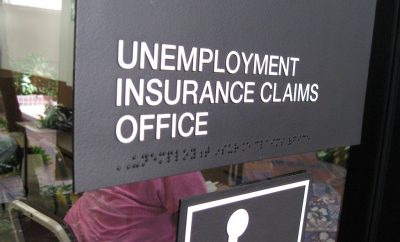 Image courtesy of [Dylan_Payne via Flickr]
Image courtesy of [Dylan_Payne via Flickr]
Politics
The Battle Over the “Welfare Queen” Law in California
The idea of a “welfare queen” has been a political talking point for several decades. It began as a term used by President Reagan in a story he told while he was running for election in 1976:
‘In Chicago, they found a woman who holds the record…She used 80 names, 30 addresses, 15 telephone numbers to collect food stamps, Social Security, veterans’ benefits for four nonexistent deceased veteran husbands, as well as welfare. Her tax-free cash income alone has been running $150,000 a year.’
The idea of a welfare queen has evolved into being characterized as a woman who stays on welfare, receiving benefits, and continuing to have children so she can get even more money from the government to support those children. In the eyes of many, the stereotype is thoroughly racist–she’s an under-performing black woman, living off of taxpayers’ money. The term is seen by many as a dog whistle of sorts, a way to play on the public’s racial anxieties without actively saying so.
Read More: No Strings Attached: Replacing Welfare With a Guaranteed Income
Some claim that Reagan’s story was a complete lie, but, there is some proof that it was at least based on reality. It now appears that there wasn’t just one welfare queen, but the subject of Reagan’s story was actually an amalgamation of three different women. Craig R. Smith, a former speechwriter for Presidents Ford and George H.W. Bush said,
It hangs together as a good story because it’s consistent with people’s perception of the real world…Like in any good mythology, you need heroes and villains and in the Welfare Queen, you had a villain who was taking advantage of the system.
Regardless of the truth, this story changed the minds of many Americans about the state of the welfare system and the people who receive the benefits.
What is the “Welfare Queen” law?
Nearly two decades ago, California passed a law that many have come to call the “Welfare Queen” law. It states that a family that has any additional children while on the welfare system is barred from getting any increases in the grant it already receives from the state. There are exemptions made if the couple in question can prove that birth control measures such as sterilization, IUD, or Norplant failed. There are also concessions made if the case involves rape or incest. In cases like those, the mothers were more quickly offered medical, physical, and monetary help. California is not the only state to use a variation of this law. In fact, other states including Arizona, Mississippi, and Virginia have similar measures.
Senate Bill 23
California Democrats are fighting to repeal the measure, calling it “classism” and “prejudicial” to the citizens of the state. Holly Mitchell, a Senator from Los Angeles, is working for the third time to abolish the law. She introduced Senate Bill 23, which would repeal the “welfare queen” law.
Advocates for the poor are mounting their strongest efforts ever to repeal the “maximum family grant” ruling as the state is about to set its budget for the next year. These changes come after it was announced that California was named the state with the highest child poverty rate.
“It is a classist, sexist, anti-democratic, anti-child, anti-family policy whose premise did not come to fruition,” said Mitchell, the author of Senate Bill 23. “It did not accomplish what it set out to accomplish. So it’s appropriate to take it off the books.”
California is very split on this topic, ranging from those who would like to impose stronger rules against the so called “welfare queens” to those who want to completely annul the law.
Arguments to Eliminate the “Welfare Queen” Law
The average cost to raise a child in America, from birth to 18 years old, is $241,080, according to CNN Money. That breaks down to about $1,116 a month–something that many low-income families will not make. If a family has more than one child, many families will go without in order to provide for the children instead.
Advocates for repeal also argue that when it comes down to it, the law is aimed at controlling women. According to Sacramento Bee, Toni Atkins (D-San Diego) said reversing the policy is “critically important to families, telling a recent women’s policy summit in Sacramento that the criteria are “’invasive (and) insulting.’” Some have even compared the law to China’s One Child Policy. Women’s groups and Planned Parenthood find fault with this measure as well, citing that it is more controlling than necessary.
In addition, those who want to repeal it say that it unfairly punishes children for the actions of their parents. Newborns need care and support, and not allowing the parents of newborns to gain the necessary resources can endanger the health and wellbeing of those children.
In an unlikely collaboration, Linda Wanner, the associate director of government relations at the California Catholic Conference, said that her group favors annulment of the bill as well, but for other reasons: “We have the opportunity to remove burdensome county processes, reduce the number of children living in poverty, and, more importantly, eliminate the incentive to terminate a pregnancy,” she said.
Arguments to Keep the Law in Place
Those who oppose abolishing the law say that removing it to raise the amount of money that the family gets will not lift any family out of poverty. According to the Sacramento Bee, Mary L.G. Theroux, senior vice president of The Independent Institute, a nonprofit research organization based in Oakland, said she doesn’t disagree that the law did not prevent births. “The opportunity cost of them having another kid is not going to stop them from doing it,” she said. However, she continued to say that giving more money would not give the growing families the incentive to get help from charities, family members, or find higher paying jobs. She then continued, “What these programs are doing is completely handicapping people from learning how to take care of their families and how to help their children have a better life than they do.” In addition, many feel that these programs that provide complete care to parents and children actually hinder further development of the child and his or her autonomy.
There’s also a concern that repealing the law would be a huge economic strain on the state of California. The state’s economy has been struggling since the recession in 2008, and pouring more money into welfare could harm its rebound even further. One analyst claimed that repealing the law could cost up to $205 million a year, although that number is difficult to reliably quantify.
According to the Sacramento Bee, Senate Republican Leader Bob Huff (R-Diamond Bar) said that helping families in poverty is an important role for officials in the state government as well as people outside of the state, and is even a nationwide issue. The question is whether repealing the maximum grant is the best thing to do with the money. “Putting $200 million into an effective job training program or providing child care for working mothers would be a better use of resources,” Huff said. Huff “pointed to a long list of other needs for both the parents and children in the state, including services for the developmentally disabled and foster children.”
Conclusion
This is not the only time that discussions have been developed around the “welfare queen” law. In 1996, President Bill Clinton signed a welfare reform law, and then-Governor of California Pete Wilson and lawmakers compromised on a statewide program called CalWORKS in 1997. This bill stiffened the work requirements and set time limits, sanctions, grant levels, and eligibility requirements for California welfare recipients.
So how much fraud is there really in the welfare system? According to Eric Schnurer of the Atlantic it’s actually not so clear.
It’s not easy to get agreement on actual fraud levels in government programs. Unsurprisingly, liberals say they’re low, while conservatives insist they’re astronomically high. In truth, it varies from program to program. One government report says fraud accounts for less than 2 percent of unemployment insurance payments. It’s seemingly impossible to find statistics on ‘welfare’ (i.e., TANF) fraud, but the best guess is that it’s about the same. A bevy of inspector general reports found ‘improper payment’ levels of 20 to 40 percent in state TANF programs — but when you look at the reports, the payments appear all to be due to bureaucratic incompetence (categorized by the inspector general as either ‘eligibility and payment calculation errors’ or ‘documentation errors’), rather than intentional fraud by beneficiaries.
The number of people living in poverty in California, and nationwide, has continued to grow and grow. The face of welfare has changed since the 1980s, as has the amount of money that is needed to raise a child, especially in a state where the cost of living is high.
Resources
Primary
California Legislature: Senate Bill No. 23
Additional
Cal Coast News: California May Repeal “Welfare Queen” Law
CNN: Return of the ‘Welfare Queen’
NPR: The Truth Behind the Lies of the Original ‘Welfare Queen‘
New York Post: When Welfare Pays Better Than Work
CNN: Average Cost to Raise a Child
Huffington Post: California Poverty Rate
Nieman Reports: The ‘Welfare Queen’ Experiment
SCPR: Lawmakers Debate Repeal of Welfare Queen Law in California
Jezebel: Reagan’s ‘Welfare Queen’ Was a Real Person and Her Story is Bananas
Editor’s Note: This post has been updated to credit select information to the Sacramento Bee.








Comments